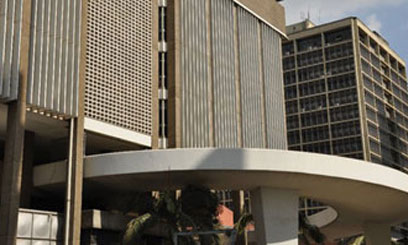
Interest rate spread can simply be defined as the interest charged by banks on loans to customers, minus the interest that banks pay on savings deposits/FILE
Interest rate spread can simply be defined as the interest charged by banks on loans to customers, minus the interest that banks pay on savings deposits.
An economic analyst has said despite many Kenyans urging banks to increase the interest customers gain on deposits, current deposit levels are still too low to fund the deposit interest.
“There is a liquidity strain in terms what customers can bring to the banks (and yet) they are the same people who have the loans, from these banks. So even if the deposit rate came up, what will it be paid on? There are no deposits,” observed Ferdinand Otieno, the Corporate Finance and Transaction Services Manager at KPMG.
According to the 2011 Central Bank of Kenya (CBK) Bank Supervision report, the Interest Rate Spread widened to 13 percent in December 2011 from 10.3 percent by December 2010. This is after the average lending rate for the banks increased from 13 percent to 20 percent in the same period.
In an interview with Capital FM Business, Otieno said the interest rate issue may take time to be settled as the market is governed by the monetary policy.
The CBK Monetary Policy Committee, in its last meeting, lowered the indicative Central Bank Rate 1.5 percent to 16.5 percent.
Otieno argues that when lending rates started rising, commercial banks should have increased their deposit rates as well to at least share the cost of the rising interest rate with their customers.
This is after the banks made astronomical profits in 2011 raising questions how they remained with so much in their hands, with depositors going home empty handed.
The pre-tax profits for the industry grew by 20.5 percent from Sh74.3 billion in December 2010, to Sh89.5 billion in December 2011.
Otieno argues that the government through its market regulators especially the CBK and the Capital Markets Authority (CMA) needs to help Kenyans to get optional sources of funding apart from the banks.
Such options would include the bond market, remittances and Foreign Direct Investments.
“Yes we will continue debating over the interest rates, but there is so much we need to do in the fiscal stance, to ensure the common mwananchi benefits, so that you are not just bank reliant in terms of capital,” he explained.
Commercial banks have pledged to cut their lending rates from next month, in line with reduction of the Central Bank rate.
Some of the banks which have announced reduction of their lending rates so far include, Co-operative Bank of Kenya, Barclays Bank, Bank of Baroda, CfC Stanbic Bank and Prime Bank.


































